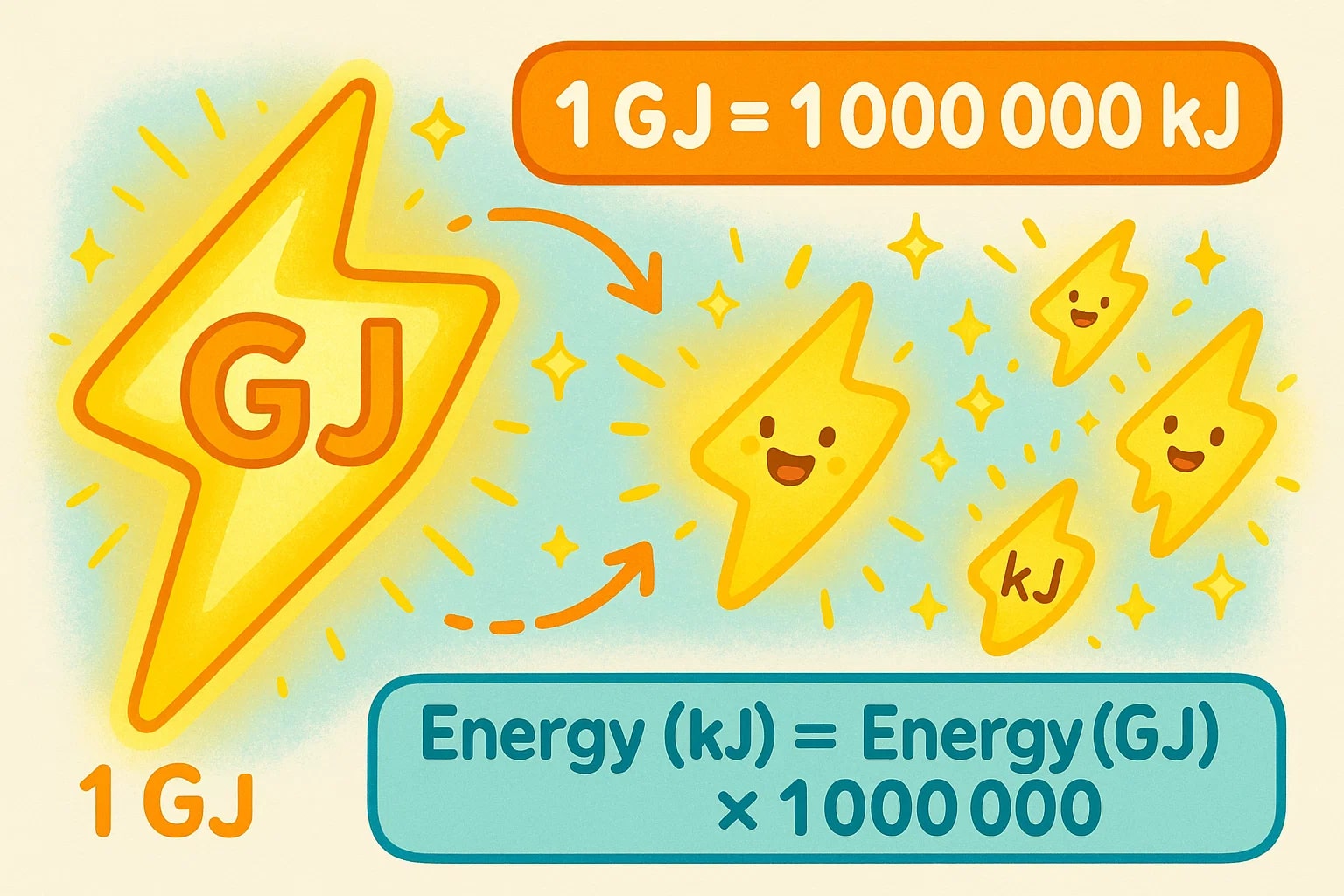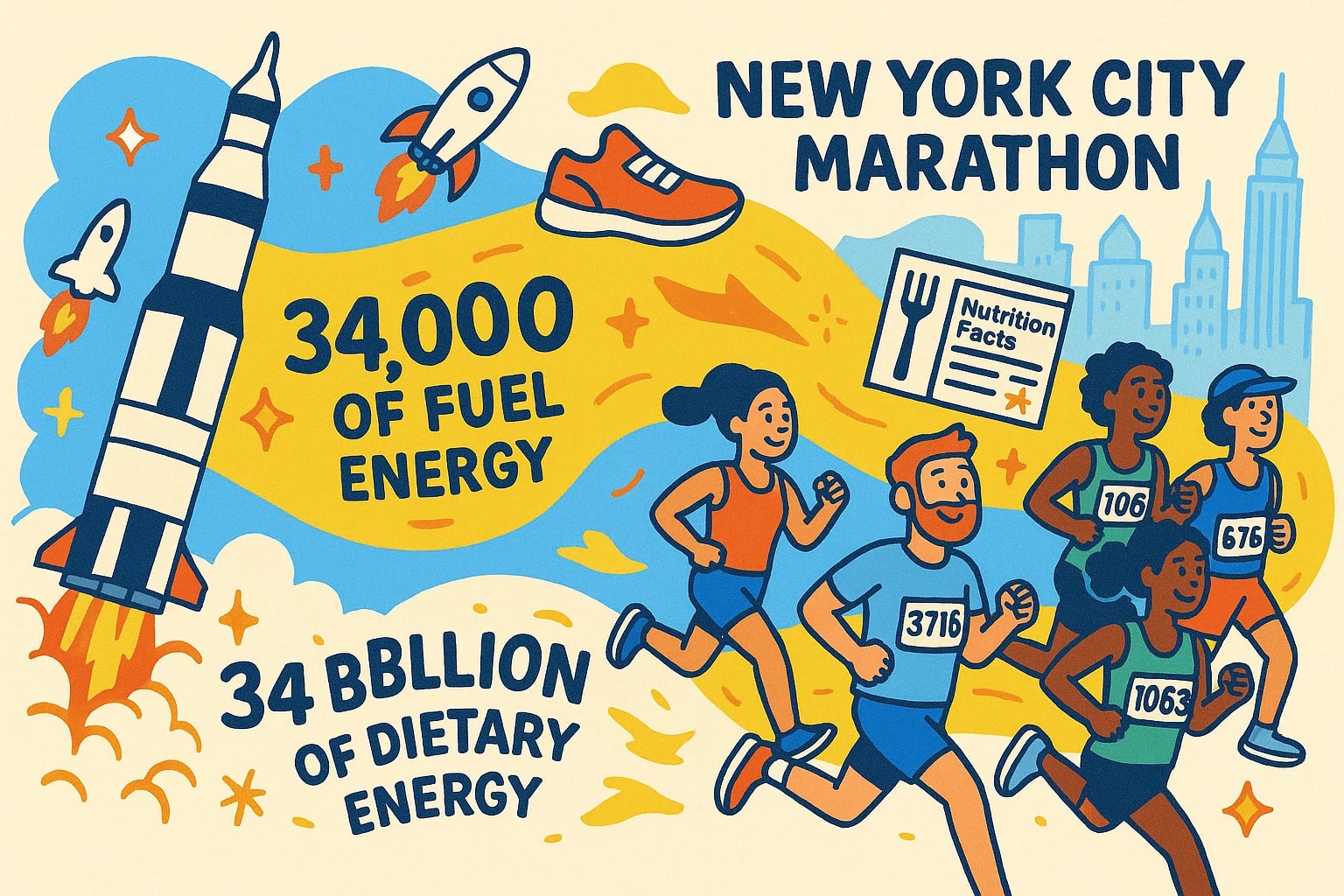Gigajoule to Kilojoule – How to convert GJ to kJ
Gigajoules and kilojoules both measure energy, but they exist at opposite ends of the scale. Gigajoules handle industrial and environmental totals, while kilojoules work for food labels, personal energy use, and smaller energy metrics. Converting between them links personal-scale energy to the world’s largest power systems.

The scale behind a gigajoule
A gigajoule (GJ) is one billion joules:
1 GJ = 1 000 000 kJ.
This unit is standard in energy markets and environmental reporting. Natural gas, coal, and district heating are often priced or tracked in GJ because annual energy totals can easily exceed hundreds of billions of joules.
For perspective, 1 GJ equals about 278 kW·h, enough to keep a typical household running for around ten days.
The kilojoule: energy in daily life
The kilojoule (kJ) is 1 000 joules. It’s the preferred unit for nutrition, exercise, and smaller appliances, where energy values sit comfortably in the hundreds or thousands. Most food packaging lists energy in kilojoules (and calories) because these amounts relate directly to human activity and diet.
A piece of whole-grain toast contains about 300 kJ of energy, while a treadmill session might burn 2 000 kJ in an hour.
How to convert GJ to kJ
The relationship is purely decimal, making the conversion easy:
1 GJ = 1 000 000 kJ
Energy (kJ) = Energy (GJ) × 1 000 000
Example:
A manufacturing facility reports using 45 GJ of natural gas in a month. Converting to kilojoules:
45 GJ × 1 000 000 = 45 000 000 kJ.
That’s 45 million kJ for the month.
For fast calculations, use Conversion tools or go straight to the Energy Converter.
Did you know?
-
The 2010 Vancouver Winter Olympics tracked all venues’ natural gas consumption in gigajoules for its sustainability reports, totaling 42 000 GJ over the games — equivalent to 42 billion kJ of heating and energy.
-
The New York City Marathon collectively burns over 370 000 000 kJ of energy by its 50 000 participants each year (data from the New York Road Runners statistics), roughly 370 GJ.
-
The Sydney Opera House’s energy efficiency upgrades (reported by the New South Wales Government in 2018) cut annual consumption by over 14 000 GJ, saving roughly 14 billion kJ per year.
-
NASA measured the Saturn V rocket’s first stage fuel burn during Apollo 11 at about 34 000 GJ of chemical energy in its launch phase — equal to 34 billion kJ (NASA technical report SP-4206).
-
The International Energy Agency (IEA) notes that a single modern onshore wind turbine can generate around 6 000 GJ annually, or 6 billion kJ, enough to power over 150 average homes.
From Rocket Launches to Marathons: Where GJ and kJ Meet
Energy scales connect surprisingly diverse worlds. The Apollo 11 Saturn V rocket burned roughly 34 000 GJ of fuel during its first stage ascent — a figure engineers used to balance fuel flow and thrust (NASA SP-4206, Stages to Saturn). Expressing that as 34 billion kJ gives scientists and educators a more tangible comparison: it’s about the same as the total dietary energy consumed by all runners in the New York City Marathon for five consecutive years.
On the opposite end, kilojoules dominate human-scale energy tracking. Athletes, nutritionists, and health researchers use them daily. But when those figures are compared to the energy systems that power cities, they must be converted upward into gigajoules to avoid mountains of zeros.
These conversions bridge everyday life and global-scale systems, helping organizations, researchers, and governments tell a coherent energy story.

Conclusion
From government reports to corporate sustainability metrics, gigajoules make large datasets readable. But when energy data needs to be presented in terms familiar to consumers — like comparing building efficiency improvements to household energy use — converting to kilojoules makes the numbers relatable and clear.
Whether you’re translating industrial energy audits, reporting renewable output, or comparing athletic energy expenditure to city power grids, Jetcalculator’s Conversion tools and Energy Converter simplify the process.
With a quick conversion, energy becomes a shared language, whether you’re talking about breakfast, marathons, or a rocket bound for the Moon.

